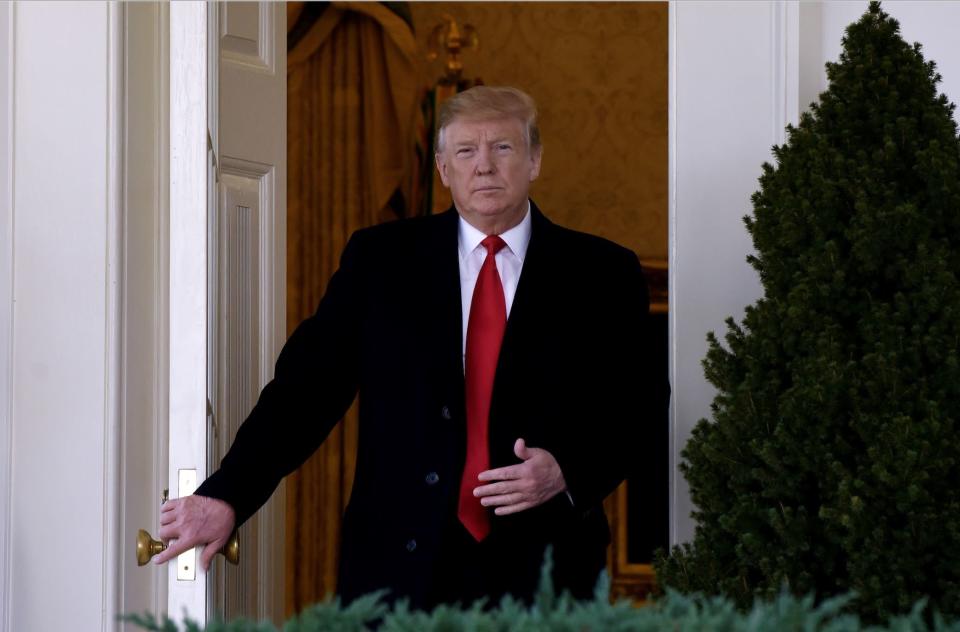Analyst: President Trump 'is going to go to Plan B' for a border wall
Update 2/14/19: Senate Majority Leader Mitch McConnell announced that President Trump agreed to sign a deal that will avoid a second government shutdown — as well as declare a national emergency. The legislation will provide $1.375 billion out of Trump’s desired $5.7 billion for border wall funding.
Update 2/2/19: President Trump, citing "tremendous obstruction by Democrats," told reporters that there's a good chance that we'll have to declare a national emergency in an attempt to obtain funding for the U.S.-Mexico border wall he demands. Senate Majority Leader Mitch McConnell (R-Ky.) warned the president against declaring a national emergency to get a wall.
The longest-ever government shutdown finally came to an end — for at least three weeks — on Jan. 25 after President Trump agree to a deal that would fund government agencies through February 15 without getting any money for a border wall.
In the meantime, President Trump and members of Congress are expected to negotiate a deal regarding the nation’s budget and whether or not there will be any initial funding for Trump’s border wall.
Although Trump doubts that a deal will be reached by the Feb. 15 deadline, Horizon Investments Chief Global Strategist Greg Valliere said “the chances are quite slim” that we see another shutdown in three weeks.
“It was a debacle,” Valliere said on Yahoo Finance’s “The First Trade.” “I don’t think Republicans on Capitol Hill would back another shutdown. So [Trump’s] going to Plan B. I’m assuming it would be a national emergency and using executive authority. But plan A, the shutdown — I think that’s unlikely.”

The shutdown led to significant ramifications for the country, including agency dysfunction, federal workers missing paychecks and turning to crowdfunding, travel delays, and other serious effects. On Monday, the nonpartisan Congressional Budget Office reported that the shutdown cost about $11 billion, at least $3 billion being a permanent loss.
“President Trump has to hold out the prospect of another shutdown because the right wing has proclaimed he’s a wimp, but another shutdown has virtually no support in Congress,” Valliere wrote in a note. “Trump is still prepared to declare a national emergency and use executive authority to fund a wall, setting a precedent that future presidents could abuse.”
Border wall Plan B almost already happened
Trump nearly declared a national emergency last week, but he and Congress reached a compromise to grant a temporary reprieve for three weeks.
Should he declare a national emergency, Trump would do so under the National Emergencies Act. Through that act, he would have to find funding for his wall through specific laws within the passage. According to Vox, “he could reallocate military spending on construction projects for the wall.” Another law “lets the secretary direct other military services for construction projects.” However, Trump would likely face several challenges in court to these actions.

An analysis from S&P Global Ratings initially placed losses from the shutdown at approximately $6 billion, significantly more than the $5.7 billion that was requested to construct the border wall. However, a new report from the Congressional Budget Office stated the number to be about $11 billion, with $3 billion being permanently lost.
“We’ve got a really bitter stretch of cold weather coming,” Valliere said. “We’ve had the shutdown for over a month. So, the first quarter GDP number is going to be terrible, probably 1%.”
“But since the shutdown is over, there is hope that there’s a snapback by March [or] April,” he said. However, “I do think this has done some real damage to the economy.”
Adriana is an associate editor for Yahoo Finance. Follow her on Twitter @adrianambells.
READ MORE:
Pregnant federal contractor: My bills are piling up and there won't be back pay to help me
Federal workers owe about $438 million in home payments amid shutdown: Zillow
The shutdown is inspiring acts of kindness for federal workers
Follow Yahoo Finance on Twitter, Facebook, Instagram, Flipboard, LinkedIn, YouTube, and reddit.
